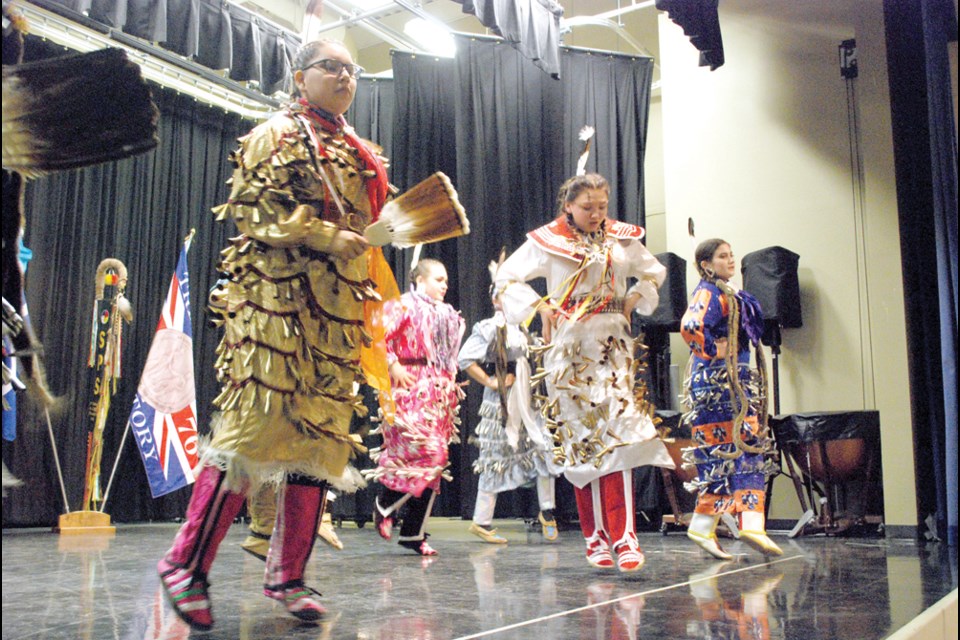For the second year, the Humboldt Regional Newcomer Centre hosted an International Day for the Elimination of Racial Discrimination event on March 28 with this year having an Indigenous Ensemble come to town.
The Saskatoon Public School group featured 35 high school dancers, 10 mentor dancers, and four singers performing traditional aboriginal dances in traditional regalia for around 650 Horizon students.
The Humboldt Public School gym was full with students from Nokomis, Lake Lenore, Humboldt Public, St. Augustine, and St. Dominic in attendance.
Some parts of rural Saskatchewan may not have as much of an indigenous population as others, says Donald Speidel with Indigenous Ensemble, so this was an opportunity for students to see indigenous culture.
The performance also was a message of unity, says Speidel.
“There’s hope that people can work together and learn together and co-exist here in Saskatchewan.”
The Indigenous Ensemble was a way for all students to get involved with aboriginal culture and feel affirmation and pride for their background.
For some of his performers, Speidel says they have become disconnected from their culture so joining the group could have been their first time putting on moccasins or the regalia and experience their culture in a positive way.
Having the opportunity to share that, like with International Day for the Elimination of Racial Discrimination performances, provides a better understanding and a greater chance for balance and unity, says Speidel.
“Hands on opportunities like this help to break some of the barriers or stigmas. Once you invite people into your home community or your learning spaces it provides for richer understandings.”
Besides just watching the performances, students also got some historical background on the importance of the dances, which is important for the dancers as well.
Settlement worker in School advisor, Odessa Sherbaniuk, with the Newcomers Centre, says they had the opportunity to take their summer camp students to a Pow Wow where the students had a lot of questions they were unable to answer.
This was an opportunity for students to continue that learning that was started in the summer.
What students seem to be learning today, says Sherbaniuk, is First Nation people within a historical context and she sees students unfortunately missing the connection between First Nation peoples who are still living and celebrating their culture today.
“An important part of having an event like this is to say this isn’t something out of your history book. These are your neighbours. These are people who live perfectly vibrant lives as you do.”
Sherbaniuk says they had a positive response from the event with lots of support from the schools and donors.




